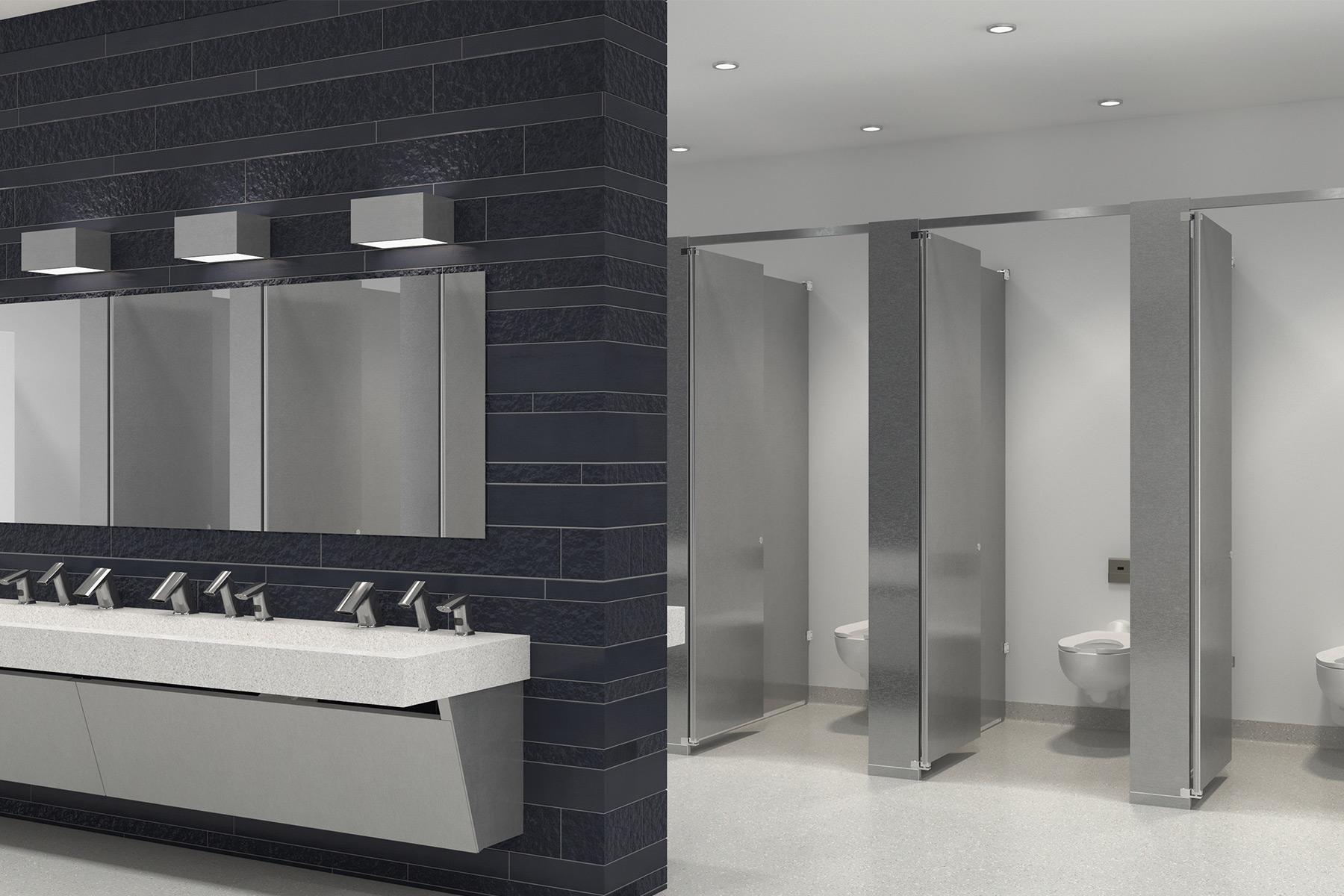Remember the classic late-90s dramedy Ally McBeal? One running joke in the eccentric law offices of Cage and Fish centered on everyone’s discomfort with the gender inclusive restroom. Men and women using the same facility? Bizarre!
Recent social developments regarding gender norms, however, have made gender inclusive restrooms a more likely consideration for commercial building owners, architects, and designers. Here’s a look at the pros and cons of gender inclusive restrooms, and some guidelines for designing.
Why are Gender Inclusive Restrooms Gaining Popularity?
Since the very first public restrooms were built, it’s been standard practice to have one for females and one for males. For more than a century, everyone seemed pretty happy choosing between the women’s room and the men’s room.
Well, almost everyone. Moms accompanying young boys, dads with young girls and parents with multiple kids were sometimes unsure which restroom to use, so in the late 20th century, shopping malls and transportation facilities began introducing family restrooms. With multiple gender inclusive toilet rooms and common space for handwashing and diaper-changing, family restrooms were a welcome innovation.
More recently, architects, designers, and building owners have become more attuned to the needs of people, who don’t feel comfortable in either the men’s or the women’s restrooms.
So are gender inclusive restrooms a good solution for large offices, entertainment venues, and other places people gather? That depends on how they’re designed.
When are Unisex Restrooms Right—or Wrong?
We tend to agree with the following:
Gender neutral bathrooms as the only bathrooms in a company are a very bad idea. They work for almost no one.
Gender neutral bathrooms alongside the standard male and female bathrooms are a very good idea. They work for almost everyone.
Making a gender inclusive restroom the only restroom in an office will almost certainly make many users uncomfortable. (Ally McBeal played this discomfort for laughs, but in real life few people will find it funny.) The fact is many people find it extremely stressful to share public bathroom space with people of the opposite sex.
Building a gender inclusive restroom alongside male and female restrooms, however, offers two significant advantages:
- It can be used by people of any sex, gender or gender identity and provides a restroom where they can feel more comfortable.
- It creates additional restroom capacity for users—of any gender identification—who aren’t concerned about whom they share restroom space with.
While the article is about office restrooms, we believe the same thinking applies to entertainment venues, transportation hubs, and other facilities where large numbers of people get together. Converting to all gender inclusive restrooms would be counterproductive, but adding gender inclusive restrooms would offer multiple benefits.
How to Make Gender Inclusive Restrooms Comfortable for All
There are three basic ways to build a gender inclusive restroom:
- The men’s room model, with conventional urinals and toilet stalls
- The women’s room model, with conventional toilet stalls only
- The family restroom model, with multiple gender inclusive toilet rooms and common space for handwashing
In all three of these, privacy should be your paramount concern. When men, women, transgender, and intersex people all use the same facility, each individual must feel comfortable.
The first two options are ordinary restrooms designated for gender-neutral use. Urinals in a restroom meant for use by women might seem like a strange idea, but they conveniently reduce waiting times for female users. For utmost privacy we recommend modesty screens between each urinal, and floor-to-ceiling walls and doors for all stalls.
The third option affords all users the greatest privacy, but multiple toilet rooms with locking doors can make the project more expensive.
We discovered another option at Space, a small music venue in Evanston, Illinois—six small, complete, locking, single-user restrooms opening off the same hallway. Men and women wait in one line and simply go into the next restroom available. The lines move quickly, and everyone has a comfortable experience.
Don’t Forget Water Savings, Transparency and Style
Aside from being built for people of all gender identifications, gender inclusive restrooms are just like all other commercial restrooms. When you’re planning one, don’t forget to consider:
- Water savings from high-efficiency flushometers, faucets, urinals, and water closets
- Transparency in environmental impact and lifelong sustainability
- Innovative style that lets you fulfill your design vision
Gender inclusive restrooms are no longer a TV sitcom gag—they’re a fast-growing reality. If one makes sense for your next commercial restroom design, we’re your top resource for creating it.
Sloan helps architects, designers, engineers and building owners stylish, sustainable commercial restrooms. Like to know more? Talk to Sloan!
Stay Up to Date
Sign up for the Sloan blog to receive information on the latest trends in commercial building, technology advancements and product updates. It's the leading source of industry news for architects, designers, engineers and contractors.
